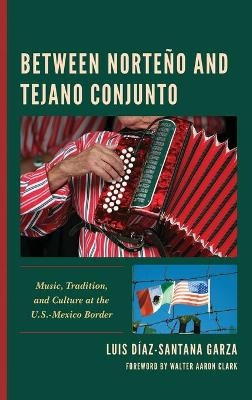
Between Norteño and Tejano Conjunto
Music, Tradition, and Culture at the U.S.-Mexico Border
Seiten
2021
Lexington Books (Verlag)
978-1-7936-3898-4 (ISBN)
Lexington Books (Verlag)
978-1-7936-3898-4 (ISBN)
Between Norteño and Tejano Conjunto analyzes the origin, evolution, and dissemination of Norteño and Tejano Conjunto, as part of a regional-transnational identity in the US-Mexico border.
Between Norteño and Tejano Conjunto:Music, Tradition and Culture at the U.S.-Mexico Border analyzes the origin, evolution, and dissemination of norteño and tejano conjunto. These musical forms represent a marginalized local identity in parts of Mexico and the American Southwest that evolved into an acclaimed form of U.S.-Mexico border identity, later becoming an international mainstream genre. This book provides a long-term historic vision of conjunto and its various musical forms such as the polka, the corrido or canción, the bolero, and the cumbia. It also analyzes its transformations and contributions to other musical cultures in terms of how it articulates meanings, organizes our sense of time and memory, and contributes to the social construction of individual identities on the border. Despite not having been spread directly by either of the two nation-states where it proliferated, the regional-transnational music of accordion and bajo sexto has been one of the leading symbols of Mexican and Chicano identity since the mid-twentieth century.
Between Norteño and Tejano Conjunto:Music, Tradition and Culture at the U.S.-Mexico Border analyzes the origin, evolution, and dissemination of norteño and tejano conjunto. These musical forms represent a marginalized local identity in parts of Mexico and the American Southwest that evolved into an acclaimed form of U.S.-Mexico border identity, later becoming an international mainstream genre. This book provides a long-term historic vision of conjunto and its various musical forms such as the polka, the corrido or canción, the bolero, and the cumbia. It also analyzes its transformations and contributions to other musical cultures in terms of how it articulates meanings, organizes our sense of time and memory, and contributes to the social construction of individual identities on the border. Despite not having been spread directly by either of the two nation-states where it proliferated, the regional-transnational music of accordion and bajo sexto has been one of the leading symbols of Mexican and Chicano identity since the mid-twentieth century.
Luis Díaz-Santana Garza is professor of music history and guitar at the Autonomous University of Zacatecas in Zacatecas, Mexico.
Table of Contents
Chapter I Border Territory: Nuevo León and Texas from Colonial Times to the 19th Century
Chapter II Precursors to Conjunto: Culture, Migration and Border Identity
Chapter III The First Epoch of Conjunto: The Instruments, Musical Forms and the Media
Chapter IV Conjunto: From Subaltern Mexican Culture to American Cultural Treasure
Chapter V Transformation and Recent Trends in Conjunto
| Erscheinungsdatum | 10.06.2021 |
|---|---|
| Reihe/Serie | Music, Culture, and Identity in Latin America |
| Vorwort | Walter Aaron Clark |
| Verlagsort | Lanham, MD |
| Sprache | englisch |
| Maße | 160 x 228 mm |
| Gewicht | 449 g |
| Themenwelt | Kunst / Musik / Theater ► Musik |
| Geisteswissenschaften ► Geschichte ► Regional- / Ländergeschichte | |
| ISBN-10 | 1-7936-3898-5 / 1793638985 |
| ISBN-13 | 978-1-7936-3898-4 / 9781793638984 |
| Zustand | Neuware |
| Haben Sie eine Frage zum Produkt? |
Mehr entdecken
aus dem Bereich
aus dem Bereich
Erinnerungen
Buch | Softcover (2024)
Pantheon (Verlag)
CHF 22,40
Universalgelehrter, Polarreisender, Entdecker
Buch | Hardcover (2024)
mareverlag
CHF 39,20


